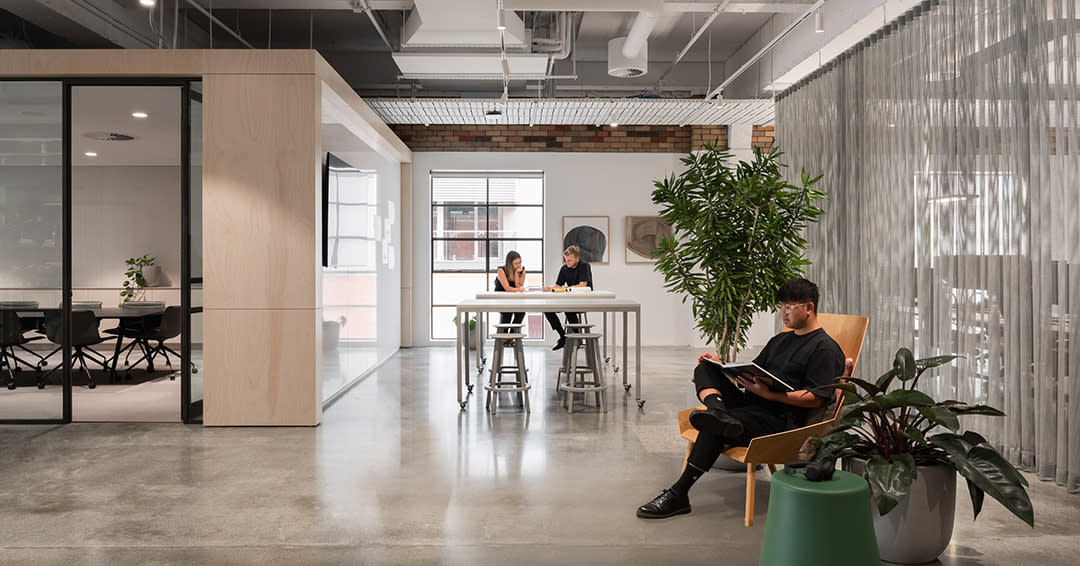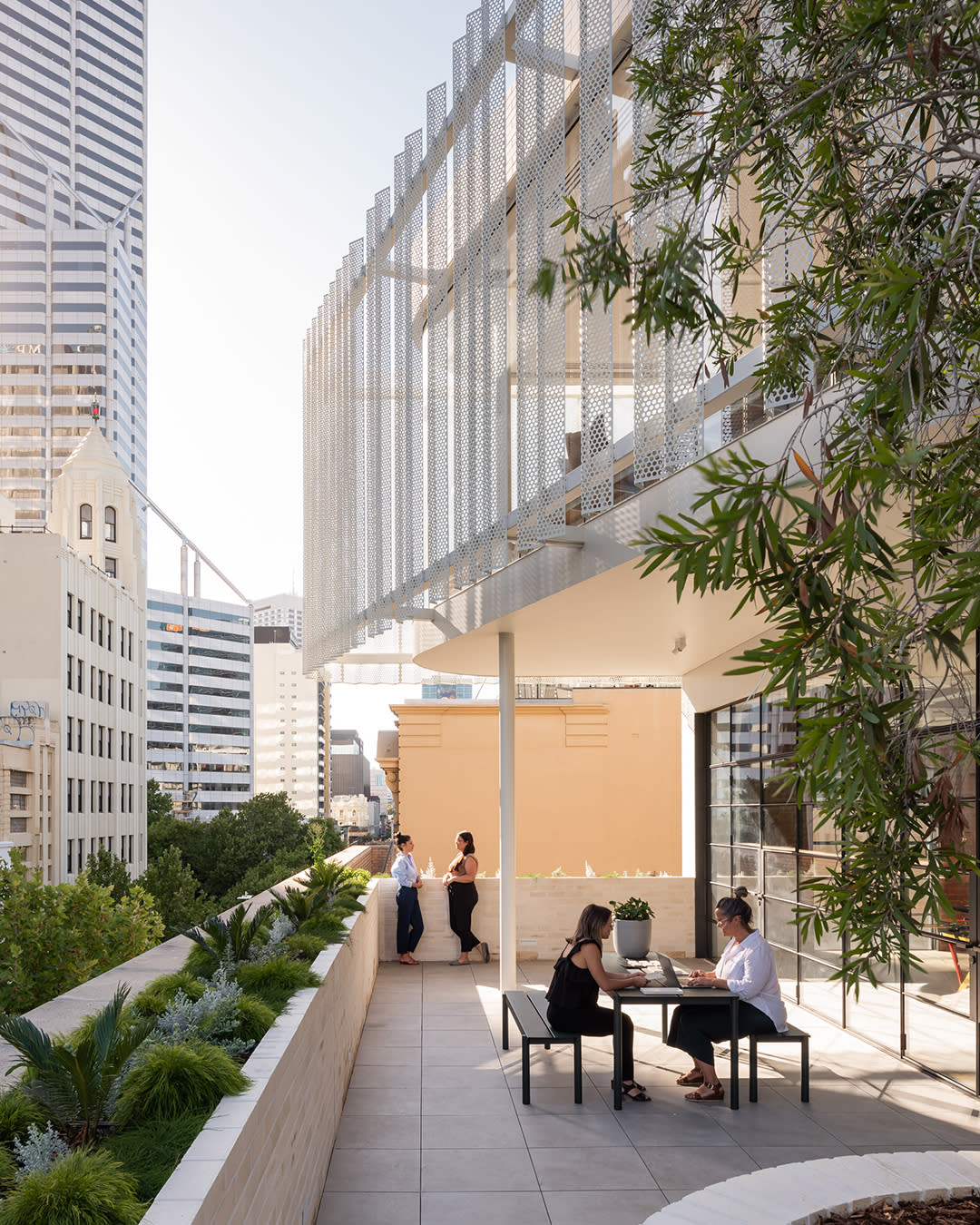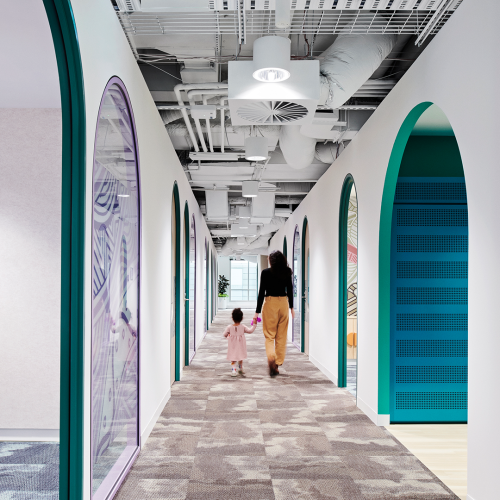Hames Sharley Perth Studio
- Client:
- Hames Sharley WA
- Location:
- Perth, Western Australia
- Awards:
-
Property Council of Australia WA Property Awards - Best Commercial/Retail Fit Out/Refurbishment - 2022
AIA WA Architecture Awards - Interior Architecture Award - 2022
Australian Interior Design Awards - Best of State Commercial Design (WA) - 2022
Master Builders Association WA Excellence in Construction Awards - Best Refurbishment or Renovation $5 – $10 million - 2022
- Credits:
-
Jessika Hames
Hames Sharley’s new Perth studio showcases both the work of the architecture and design company, and the revitalisation of a long-neglected part of the city.
Situated on Hay Street above Kmart, the 1,100sqm space was abandoned for decades, and long deemed unfit for use. Hames Sharley had been commissioned by the City of Perth to examine reactivating such vacant tenancies, and worked with site owners the Humich Group to revitalise the redundant space.
Transforming the site came with abundant challenges, from the limitations of using crane lifts around a functioning mall, to conditions not immediately obvious in the initial surveys. Unearthing a latent hunk of concrete when sinking the elevator shafts, for example, required creative adaptability and an additional three weeks’ excavation.
Extensive consultation with staff across Hames Sharley’s studios accommodated a range of workplace approaches, including 14 work settings supporting 26 tasks identified as essential.

The palette is authentic, timeless and natural, and links physical expanse and enhanced creative thinking. Low ceilings were removed, revealing 4.3m high slabs, which were painted white, with services left exposed. Existing brick walls were cleaned but otherwise untouched, and the concrete floors polished, with meeting spaces designed as pavilions of natural plywood that act as an unobtrusive backdrop, their independent volumes simultaneously celebrating the height. Drapes and joinery in deep calming greens compliment indoor plantings.
With views, abundant natural light, exceptional acoustics, and a roof terrace offering access to the outdoors – a premium in city locations – the site is a model of adaptive reuse and project sustainability. As well as the expected use of low-energy fittings, the project limited transport of materials by using local suppliers and products where possible, and has dramatically reduced commuting within the company. By relocating the studio in the city, access to clients and consultants requires less travel, with better access to public transport for staff. A bike store and end-of-trip facilities further reduce emissions, and the project’s ongoing sustainability strategy aims for eventual carbon neutrality.

The design also demonstrates a significant shift in how office space is perceived. Deliberately putting the staff first, it flips the traditional approach of placing the greatest emphasis on spectacular focus points such as boardrooms, intended to impress visiting clients. Instead, ‘prime’ areas are given over to the people who use them most, generating interaction and creative connections. When clients visit, they are impressed instead by a welcoming staff space that’s the result of a carefully weighed design process and the human touch: a reminder that design has an impact on how we act and what we feel.
While a private office space, the studio also delivers enhanced visuals to the retail strip and brings 90 new staff to the area, whose presence has boosted the mall’s economic sustainability. The roof terrace space further engages with the community, being offered for events hosting.
Overall, the new studio is a convenient, welcoming and affirming work environment, that demonstrates how unused city locations can be reactivated into vibrant and profitable tenancies.













